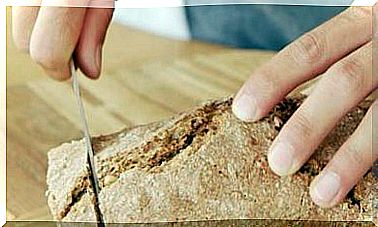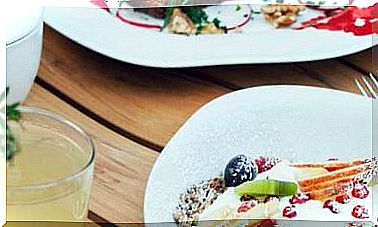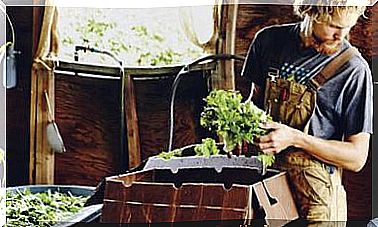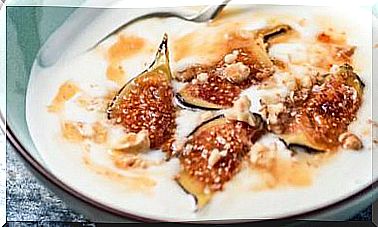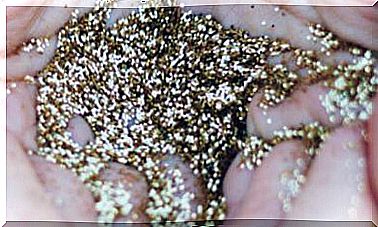10 Recipes From Chefs To Take Advantage Of Fruit And Vegetable Scraps
With food scraps or ugly pieces we can prepare delicious recipes and reduce what we throw away. These chef proposals will convince you.
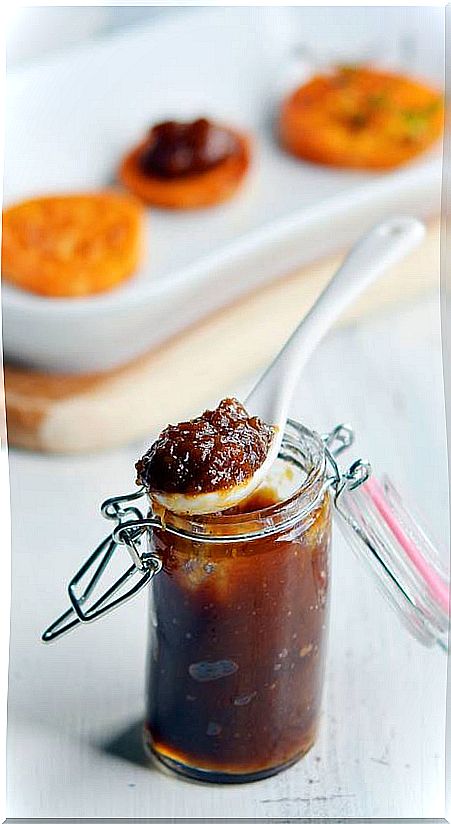
- Vinegar with Fruit Leftovers, by Conor Spacey
- Cauliflower log salad, by Joan Roca
- Broccoli Stalks Gratin, by Tom Hunt
- Coconut Garlic Soup, by Jehangir Meta
- Pesto with carrot stems, by Fabián León
- Chutney with carrot skins, by Simon Horwitz
- Pear and apple jelly, by Steven Satterfield
- Roasted pumpkin skin, by Anne Marie Bonneau
- Strawberry Vinaigrette, by Alison Mountford
- Quick lettuce cream, by Juan Arbelaez
More and more chefs are committed to sustainability and give good ideas or share recipes to take advantage of leftovers or use leftover fruits and vegetables that would normally end up in the trash. They sharpen the ingenuity so that not a gram of food is thrown away. It is the answer to the serious problem of food waste, to which we do not give enough importance.
In 2019 alone, 931 million tonnes of food was wasted , according to a report by the United Nations Environment Program and UK waste organization WRAP. According to these figures, 17% of the total food production in the world went to waste. For this reason, reuse recipes are a trend.
In recent years there have been several initiatives to raise awareness of the importance of making the most of everything in the kitchen and professional chefs have joined them, including some great chefs with Michelin stars.
We have been able to see great chefs such as Joan Roca or Carme Ruscalleda supporting initiatives such as Chefs against Waste, promoted by Too Good To Go, an app that offers all kinds of tools to fight against food waste.
We have also seen how some chefs, such as the vegetarian Teresa Carles, for example, have launched their own product lines made with leftovers. At Flax & Kale, a restaurant founded by Teresa Carles and a brand of fresh juices and kombuchas, they take advantage of the enormous excess fiber in their cold-press juices creating nachos and snacks of vegetables and nuts, without animal fats or additives, which bear names such as Vegan Vampire Chipotle or Forever Young Tomato.
Chefs such as Ada Perellada have gone in another line , who is behind the im-perfect products launched by the Espigoladors platform, made with fruits and vegetables discarded because of their appearance before being marketed and which, however, are perfectly usable.
But the most interesting thing about all this is that these chefs have given us ideas and recipes that we can take advantage of ourselves. They allow us to verify that we can prepare delicious recipes by turning things that we would have thrown away into our main ingredients.
We have compiled some examples of ideas and recipes from chefs, so that they inspire you and you can make the most of your leftover vegetables and other foods that you might never have thought you could take advantage of. Not only will you thus reduce your ecological footprint but you will save and expand your resources to create original and delicious dishes.
1. Homemade Vinegar with Fruit Leftovers, by Conor Spacey
You can use fruit scraps, spoiled pieces, already brown bananas … With all that, you can make your own vinegar. That is the proposal of chef Conor Spacey, an expert in fermentation and waste reduction.
Your recipe includes: a non-metallic container, fruit, sugar, oxygen, and time. With them will grow the aerobic bacteria of acetic acid, the Acetobacter. You need at least 200 grams of fruit scraps (skin, heart, bruised whole fruit) and sugar or honey.
- Cut the fruit scraps into pieces and place them in a container.
- On a scale, zero the reading and then cover the remains with cold water. Record the weight of the water and add a tablespoon of sugar for every 250 g of water.
- Remove and cover with a cloth to allow free flow of oxygen. Keep it at room temperature and safe from direct sunlight for a week, but stir every day.
- Strain the fruit and let the liquid continue to ferment (always covered with a cloth) for 2-4 weeks. Finally, store it in a sterilized jar where it will be ready to consume.
2. Cauliflower logs with tangerine skin sauce, by Joan Roca
This recipe by the famous Catalan chef Joan Roca, in charge of it with his brothers at Celler de Can Roca, is his contribution to the Chefs Against Waste initiative promoted by Too Good to Go.
Joan Roca encourages you to let your imagination and creativity fly so that nothing ends up in the trash. This is what he has done in this aromatic recipe, in which the cauliflower trunks and the tangerine skin are used, with very few additions. You need:
- 200 g cauliflower logs
- 200 g of boiled potato
- tangerine skin
- 1 dl of olive oil
- 1 teaspoon of vinegar
- 1 teaspoon mustard
- 1 teaspoon of honey
- Salt
To prepare them, cut the cauliflower trunks into very thin slices with the mandolin and make a vinaigrette by mixing the oil, vinegar, mustard, honey and salt with tangerine skin.
The logs are eaten raw, like in a salad. Spread the plate with a good dollop of sauce, says the chef, and build the salad with a little boiled potato, the logs you just cut, and the vinaigrette. If you want, add fresh herbs to flavor it.
3. Broccoli Stalks Gratin, by Tom Hunt
Tom Hunt, climate change activist and author of Sustainable Food. Buying, cooking and eating to preserve the planet, proposes this recipe with other stems that we usually discard: broccoli stems (yes, what is thrown away when cutting the bouquets).
Julienned together with celery or potato and with pickles, sour cream, mustard, garlic, lemon zest and dill, they are baked and then grated with grated cheese on top (you can use vegetable cheese).
They only need 50 minutes at 190 ºC, and you already have a rich and nutritious meal that helps you keep the garbage empty.
4. Coconut and garlic soup with vegetable scraps, by Jehangir Meta
From his restaurant Graffiti Earth in New York City, chef Jehangir Mehta has made sustainability his leimotif. With the remains of all kinds of vegetables, he prepares a vegetable base that he uses in original recipes such as this coconut and garlic soup.
Make a vegetable stock first. For a week or whatever you need, accumulate all the leftovers of your vegetables. You need about four cups. When you have them, bathe them in 3 tablespoons of olive oil and bake them for 10 minutes at 350 degrees. Then, in a pot, simmer them for 20-30 minutes with 1.5 liters of water until the liquid is reduced by half and filter it through a fine strainer. You already have your fund.
To make the soup you will need:
- 2 cups of your vegetable stock
- 2 tablespoons olive oil
- 6 cloves of garlic
- ½ cup of red onion cut in julienne
- ½ cup diced tomatoes
- 2 red chillies, halved
- 1.5 cups of coconut milk
- 1 tablespoon of rice vinegar
- ½ cup coriander
In a saucepan, sauté the garlic in olive oil over medium heat until golden brown. Add the onion, tomato and chillies. Sauté a little more and add the broth. Let it boil slightly for 15 minutes, add the coconut milk and lower the heat even more, so that the coconut milk does not boil. After 5 minutes, remove from the heat and go through the blender with the vinegar and cilantro. Pass through a fine or Chinese strainer and you’re done.
5. Pesto with carrot stems, by Fabián León
The carrot leaves can be chopped and used to decorate vegetable creams, or we can add them to smoothies and even minced, in salads as if it were parsley. But with them we can also make a pesto. This is the proposal that chef Fabián León, the entrepreneur and foodhacker known for his past as a finalist in the first edition of Masterchef, also made to contribute to the Chefs Against Waste campaign promoted by Too Good to Go:
When you have stalks of several carrots left over, grab these other ingredients:
- 80g grated Parmesan
- 1 clove garlic
- 50 g raw almonds
- 100 ml of extra virgin olive oil
Then you just have to crush the stems together with the garlic, almonds and Parmesan cheese and gradually add the olive oil, until you have the texture you like. Use it on pizza, pasta dishes, or on toast.
6. Chutney with carrot, ginger and cumin peels, by Simon Horwitz
We can not only take advantage of the stems, but also the carrot peelings. With them, chef Simon Horwitz, in charge of the Elmer restaurant in Paris, prepares this spicy chutney. It is included in the blog Cuisine Anti-Gaspi, specialized in cooking against food waste.
To prepare a jar of chutney you will need:
- 200 g washed carrot skins
- 50 g fresh ginger
- 2 g of cumin beans
- 50 g acacia honey
- 40 g cider vinegar
- salt flower
Caramelize the honey and deglaze it with the cider vinegar. Reduce it and, when it has the consistency of syrup, add the carrot skins.
Then grate the ginger and lightly toast the cumin in the pan (without oil). Add them to the preparation and cook gently for 20 or 30 minutes until they have candied. Try in case you have to add more spices or salt and, if it is to your liking, let it cool. Keep it in the fridge.
7. Pear and apple jelly, by Steven Satterfield
This American cook is an advocate of reuse. In its restaurant, Union Millet, it serves omnivorous organic food with a particular emphasis on taking advantage of parts of the food that are not commonly used, from fennel and radish stalks to the more woody stalks of some vegetables. It makes vinegar with cherry pits and vegetable bottoms with leftover vegetables. This jelly is made from the damaged hearts, skins, and chunks of pears and apples.
If you accumulate 4 cups of pear and apple waste, you can prepare the gelatin also using:
- 2 cups apple cider
- 1 cup apple cider vinegar
- 1 cups of sugar
- ¼ cup fresh or frozen cranberries
- ½ teaspoon fine sea salt
Cook the peelings and leftover apple, pear or both with the rest of the ingredients in a saucepan with two cups of water for half an hour, until the fruit tends to fall apart. Pass it through a fine strainer over a bowl to collect the liquid and, without pressing the remains, leave them for a while to finish releasing the water.
Pour the liquid back into a saucepan and cook for about 20 minutes, over very low heat, until it reduces by three-quarters and forms large bubbles. Let cool and that’s it. If it is too liquid you can return to the heat and reduce a little more, but avoid caramelizing.
You can keep it in the fridge for up to two weeks or keep it in sterilized jars.
8. Roasted Pumpkin Skin, by Anne Marie Bonneau
The “zero waste chef” Anne Marie Bonneau, from her blog and her book The Zero Waste Chef, offers a wide variety of simple recipes to use. An example is this simple idea: to take advantage of the skin after making a pumpkin cream, we can roast it and eat it as is.
In a 175 ºC oven, put 5 to 7 cm pieces of pumpkin skin, add olive oil and salt, and bake for 20 minutes.
By the way, we can also roast the seeds.
9. Strawberry Leaves and Leftovers for a Vinaigrette, by Alison Mountford
Chef Alison Mountford is behind the endsandstems Instagram account (which could be translated as “tips and stems”). There he shares his secrets for a family kitchen, simple and zero wast e.
When we prepare strawberries, it is common to end up with a lot of leaves and pieces of fruit (the caps or whitish parts) in the trash. She proposes to take advantage of everything to make a simple vinaigrette.
Place leaves and leftovers in a glass jar and cover with white wine, cider, or rice vinegar. Add a little sugar and, if you want, a little lemon zest. Leave it to marinate in the fridge, covered, for 48 hours, and shake it from time to time so that the sugar dissolves. You can use this vinaigrette in your salads.
10. Old lettuce to make a quick vegetable cream, by Juan Arbelaez
This Colombian chef based in Paris is another popular Instagrammer who encourages on his Juanarbelaezchef account to reduce what we throw away. En has, for example, a popular sponge cake made with blackened bananas. And to take advantage of that lettuce that was left in the fridge and we no longer feel like it in the salad, he proposes this simple cream.
Lightly sauté garlic and onion in a saucepan with a little olive oil, add the coarsely cut lettuce and cover with water. Salt with sea salt and cook over medium heat for 15 minutes. Then crush it and correct the salt. Decorate it with a thread of oil.
